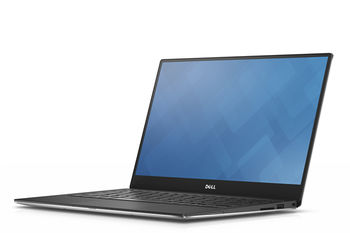DELL XPS
 The XPS name dates back to 1990 when Dell was more focused on corporate business than consumers. Gateway was number one in the high-end consumer market. In early 1993, there was a staff meeting to address how to pursue this emerging market. At this time, Dell’s annual revenue was less than $500 million and Michael Dell was involved in most decisions. At this meeting, it was decided to launch a new high-end product line to compete with Gateway. Vernon Weiss was assigned as product manager to spearhead and manage the marketing of the new product. He worked with Brian Zucker who led the architecture and engineering effort. In September 1993, the first two versions of the XPS line were announced. The first generation of the XPS system was available as either a desktop or a tower case. This new product line was so far ahead of the competition that it was featured on the cover of the October 1993 issue of PC/Computing.
The XPS name dates back to 1990 when Dell was more focused on corporate business than consumers. Gateway was number one in the high-end consumer market. In early 1993, there was a staff meeting to address how to pursue this emerging market. At this time, Dell’s annual revenue was less than $500 million and Michael Dell was involved in most decisions. At this meeting, it was decided to launch a new high-end product line to compete with Gateway. Vernon Weiss was assigned as product manager to spearhead and manage the marketing of the new product. He worked with Brian Zucker who led the architecture and engineering effort. In September 1993, the first two versions of the XPS line were announced. The first generation of the XPS system was available as either a desktop or a tower case. This new product line was so far ahead of the competition that it was featured on the cover of the October 1993 issue of PC/Computing.
For the next three years, with Vernon Weiss and Brian Zucker continuing to evolve the product line, the XPS systems beat the competition in over 100 magazine reviews and covers, being the first to adopt the latest PC technology available and bring it to the consumers at an attractive price. The XPS mainly competes against computers such as Acer‘s Aspire, HP‘s Pavilion and Envy, Lenovo‘s X1, Samsung‘s Sens, and Apple MacBook Pro.
From 1997 to 2001, as Dell grew into a large corporation, the XPS line lost its position as the leading-edge performance machines and became essentially just a line for fast computers. In 2005 Dell revamped the XPS line to compete with Alienware (now owned by Dell) and Falcon Northwest.
In 2005, Dell separated its home desktop systems into two lines: Dell Dimension and XPS. Consumer notebooks were also separated into two lines: Inspiron and XPS. While the XPS designation used to mean the hardware was high-end and well suited for gaming, that is no longer the case. For example, the XPS 200 is limited to extremely low-end video cards, while the XPS M140 is only configurable with Intel video, thus making both systems unsuited for gaming or high-end usage.
Dell had considered buying Alienware from 2002, but did not take any action until March 22, 2006 when they purchased the company.[1][2] Alienware maintained its autonomy in terms of design and marketing. However, Alienware’s access to Dell’s supply chain management, purchasing power, and economies of scale lowered its operating costs.[3] The XPS line initially had the same specifications as those offered by the Alienware division. In 2008, Dell introduced “Studio XPS” and Dell advertised it as a performance computer line while Alienware was being advertised for gaming. On June 2, 2009, The M17x was introduced as the First Alienware/Dell branded system.

